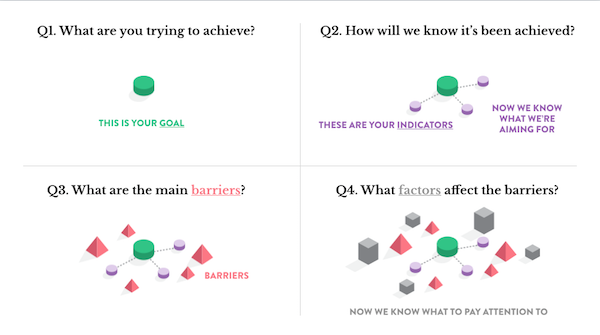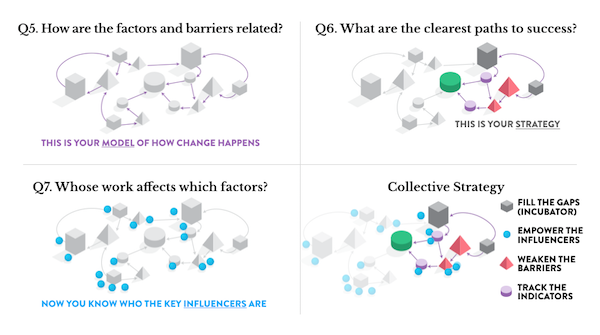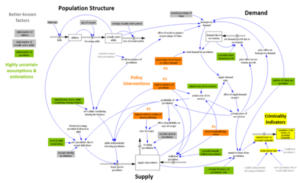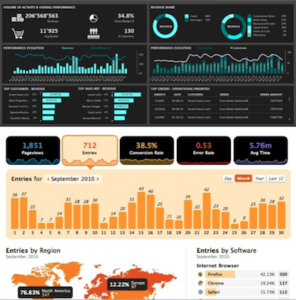A Platform for Solving Large-Scale Social Problems
To solve the hardest problems in any society, it’s not enough to be individually effective. Changemakers and innovators need to be collectively strategic or their achievements will never add up to ultimate success.
The Foundation for Inclusion (FFI) is building a global platform to rally, unite, and empower changemakers to solve complex, large-scale social problems. This post introduces FFI’s Collective Strategy platform, describing the method we use (based on an innovation that makes collective strategy possible) and the portals that result (which offer strategically important content for farsighted changemakers).
The Method
We’ve distilled decades of research, experience, and collective wisdom into seven questions and a rigorous, collaborative process for answering them. This method for building collective strategies is described in greater detail in the inaugural Foundation for Inclusion Research Brief (pdf), published in early 2018.
The innovations described there were developed by FFI’s founder, a social scientist and military strategist, over the course of a twenty-year career focused on large-scale change in complex environments. The key insight is to shift the emphasis from solving problems to fixing problem-solving systems. That’s what FFI’s portals are designed to achieve.
This Seven Questions (7Q) method makes it possible to discover what it would take to achieve significant and lasting change on any complex social challenge (see Figures 1 and 2).

Figure 1. 7Q Method, Q1–Q4

Figure 2. 7Q Method, Q5–Q7
The Portal
Each FFI initiative is a collaboration focused on one well-defined social problem and a collective strategy to solve it. We set up one portal for each initiative we launch and make it available to changemakers on a subscription basis. Anyone working on any aspect of that problem may subscribe to the portal set up for that initiative. Our Collective Strategy platform is designed to host multiple portals at once, so we can launch as many initiatives as there are social problems to be solved!
Registered users may access the open area at no cost. The open portal offers a big-picture view of the entire problem space: What is happening right now that affects whether we are collectively making progress? What are we missing? Behind a paywall is our technical portal, which includes models, tools, and data for strategic-level decisionmakers, technical advisers, and scholars.
In space exploration and military campaigns, command and control centers display mission-critical information in real time. But that’s not all: real strategies and operational plans drive those visualizations so decisionmakers can address risks and gaps as needed.
FFI’s Collective Strategy platform similarly offers a suite of tools and visualizations that help changemakers be more strategic in how they solve large-scale social problems. Our “Mission Control Center” offers paid access to the full suite of FFI products.

Figure 3. Mapping FFI’s Portal to the 7Q Method
The Dashboard (open portal)
Each FFI initiative has its own portal, focused on a single well-defined social problem (e.g., sex trafficking in Atlanta, polarization in Kentucky). After logging on to the platform, subscribers may choose which portal to enter.
The landing page is a dashboard offering visualizations of historical trends, current status, and forecasts of key indicators of collective progress. Within 30 seconds, users know exactly how much progress is being made by everyone working on that problem.
Daily Blog (open portal)
News updates and research reports are widely available for most social problems. But they tend to focus on just part of the problem without relating it to the strategic questions: What does this news imply for whether we can achieve our ultimate goal? What does this research add to what we already know about the problem?
Our blog always connects news and research to the big picture, referring frequently to evidence, models, best practices, and simulation results (as different models predict different scenarios, like in weather forecasting).
Backgrounder on the Initiative (open portal)
This section of the portal gives detailed information about the social problem and the scope of the (collaborative) initiative:
- the definition and parameters of the problem the initiative focuses on detailed results of the participatory process that identified the initiative’s goals, key indicators, and barriers (Q1-Q3), plus historical data and forecasts;
- an introduction to the main factors, key feedback loops, and strategic leverage points (Q4–Q6) identified by FFI’s technical experts;
- a summary of the collective strategy derived from this collaborative process; and
- a discussion of gaps in the collective strategy, as identified through FFI’s ongoing effort to catalogue significant influencers (Q7) in the problem space.
System Maps (open portal)
A system map shows, in one chart, all underlying causes of a complex problem. Users can see exactly how their own work fits in to the big picture at a glance. (For an excellent example, see the Democracy Fund’s system map of Congress and public trust, visualized using Kumu.)
The full structure of the problem is visible: how all goals, indicators, barriers, and factors (Q1–Q4) are related; vicious cycles and virtuous cycles; potential sources of unexpected outcomes; and potential leverage points for a collective solution.
Models (technical portal)

Figure 5. Example of a System Dynamics Model: Kővári & Pruyt, “Prostitution and Human Trafficking” (pdf). Authors’ visualization using Vensim.
System maps represent social problems graphically. Quantitative models represent them mathematically. Scholars often build models to study social problems systematically.
When available, we make quality models accessible via the technical portal so researchers can replicate, validate, and refine them or use them in forecasting.
In addition, our 7Q Method engages a wide range of collaborators to produce a system dynamics model suitable for simulation and scenario testing.
Simulation Models to Test Collective Strategies (technical portal)
Models (e.g., econometric, network, agent, system) can be used to test ideas about how to solve complex problems. FFI uses multiple methods to identify key leverage points (needed to build collective strategies) and lets users test scenarios for their own strategic decisions. (For excellent examples of simulation dashboards, see Forio, our likely simulation vendor.)
Influencers Directory (technical portal)
FFI endeavors to catalog everyone and everything that significantly influences any aspect of the social problem under focus, collecting data on their activities, capabilities, and achievements. This data helps identify key gaps in the collective effort and makes advanced modeling of collective strategies possible. Access includes:
- information about ongoing experiments on ways to fill those gaps
- identification of opportunities to invest in scaling up social ventures trying to fill gaps
Impact Accounting (7Q+ technical portal)
With a collective strategy and portal in place, subscribers will have access to FFI’s custom Impact Accounting service, which helps changemakers precisely measure their impact on the ultimate goal and test alternative strategies to improve it. This is the only portal that can be used for both impact assessment and impact evaluation, business management and business strategy, and the simultaneous management of cash flow and impact.
The Process
There is a great deal of flexibility in how the 7Q method’s questions can be answered to produce strategically useful content on the FFI platform, but the process must be:
- rigorous—using any scientifically valid method to find answers
- iterative—with answers building upon partial answers, in any order
- participatory—involving people affected by the problem as well as expert
A future brief will describe FFI’s process in detail



[…] first Research Brief summarizing the approach we take to solving large-scale problems and a capabilities brief showing what the platform will look like (let me know if you’d like a copy of that [EDIT: […]